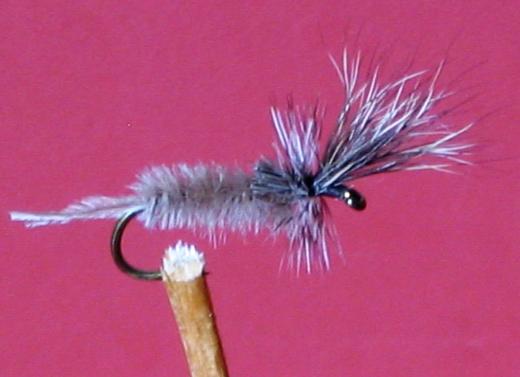Fly of the Month – Ostrich Herl Callibaetis Cripple
Materials
Hook: Tiemco 5262 #s 12-16
Thread: Black 8/0
Tail/shuck: Tan or gray ostrich herl
Tail/body: Tan or gray ostrich herl
Wing: Light deer hair
Hackle: Light dun
I’m told that fish often will target crippled or spent insects in the film, bypassing more active forms. Based on numerous lake trips with active callibaetis hatches, I can tell you that this simple cripple pattern is a steady producer.
1. Tie in two or three ostrich herl tips (gray or tan, whatever is closest to the natural insect where you’ll fish) for the tail, about as long as the body.
2. Tie in the small end of a long strand of ostrich herl (color to match tail) at the tail tie-in point, and wind tightly to form a body, ending about ¼ of the way from the eye. Tie off and trim.
3. Clip a clump of deer hair, remove the underhair, and stack the hair in a hair stacker.
4. With five or six thread wraps, tie in the wing, tips forward, at the front of the body, on top of the hook so that the wing is about as long as the body or a bit more. Try to keep the hairs in a clump pointing about 45 degrees forward, rather than fanning or spreading out.
5. Clip the butt ends of the hair wing about 1/8 inch behind the hair wing tie-in point.
6. Select a hackle with splines the length of the hook gap (slightly undersized from what you would use for a dun). Tie in the hackle at the wing tie-in point, butt-first and shiny side forward, and wind five or six times, tie off and clip.
7. Lifting the wing hair slightly, wrap the thread forward over the hook shank under the wing to the eye, making several wraps tight against the front of the wing clump (to help keep it elevated pointing forward). Build and finish the head with three half hitches, trim and seal with a small drop of head cement.


